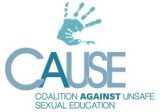Copyright 2016. All rights reserved. Print copies available at TheNewAtlantis.com/BackIssues.
Part One: Sexual Orientation
Perhaps, given the inherent complexity of the subject matter, attempts to devise “objective” scales of this sort are misguided. In a critique of such approaches to social science, philosopher and neuropsychologist Daniel
- Robinson points out that “statements that lend themselves to different interpretation do not become ‘objective’ merely by putting a numeral in front of them.”22 It may be that self-reported identifications with culturally fraught and inherently complex labels simply cannot provide an objective basis for quantitative measurements in individuals or across groups.
Another obstacle for research in this area may be the popular, but not well-supported, belief that romantic desires are sublimations of sexual desires. This idea, traceable to Freud’s theory of unconscious drives, has been challenged by research on “attachment theory,” developed by John Bowlby in the 1950s.23 Very roughly, attachment theory holds that later affective experiences that are often grouped under the general rubric “romantic” are explained in part by early childhood attachment behaviors
(associated with maternal figures or caregivers)—not by unconscious, sexual drives. Romantic desires, following this line of thought, might not be as strongly correlated with sexual desires as is commonly thought. All of this is to suggest that simple delineations of the concepts relating to human sexuality cannot be taken at face value and that ongoing empirical research sometimes changes or complicates the meanings of the concepts.
If we look at recent research, we find that scientists often use at least one of three categories when attempting to classify people as “homosexual” or “heterosexual”: sexual behavior; sexual fantasies (or related emotional or affective experiences); and self-identification (as “gay,” “lesbian,” “bisexual,” “asexual,” and so forth).24 Some add a fourth: inclusion in a community defined by sexual orientation. Consider, for example, the American Psychological Association’s definition of sexual orientation in a 2008 document designed to educate the public:
Sexual orientation refers to an enduring pattern of emotional, romantic and/or sexual attractions to men, women or both sexes. Sexual orientation also refers to a person’s sense of identity based on those attractions, related behaviors, and membership in a community of others who share those attractions. Research over several decades has demonstrated that sexual orientation ranges along a continuum, from exclusive attraction to the other sex to exclusive attraction to the same sex.25 [Emphases added.]
One difficulty with grouping these categories together under the same general rubric of “sexual orientation” is that research suggests they often
Fall 2016 ~ 23
